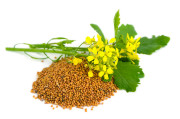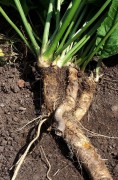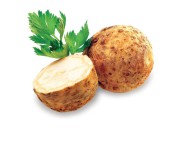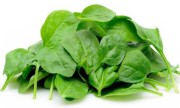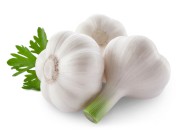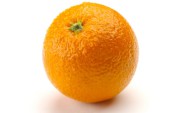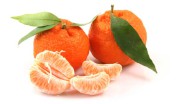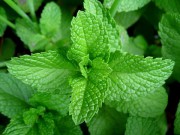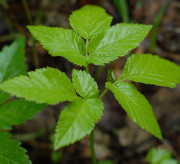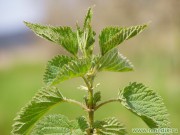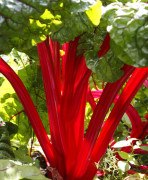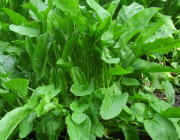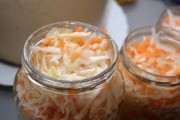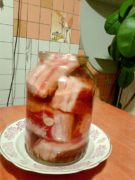Plants
Mustard and its properties used in cooking and cosmetology. The benefits of mustard and harm to the body.
Mustard has long earned respect from humanity. It has become one of the most worthy seasonings in the vast sea of spices. The long range of vitamins and beneficial components it contains increases appetite and actively helps the digestive system absorb fatty foods.
Horseradish root: beneficial properties and recipes for storing horseradish for the winter at home.
Horseradish is a herbaceous plant from the cabbage genus. Its beneficial properties allow you to use all its parts: roots, stems and leaves. The plant is indispensable for pickling and pickling cucumbers, tomatoes, mushrooms, and apples. And the roots are also used to prepare seasonings, sauces and medicines in folk and official medicine.
Types and varieties of mustard.
There are a great many varieties and types of mustard. It is for this reason that it is called the rainbow family. Let's try to briefly talk about the most famous and popular of them.
Celery - benefits and harm for men and women. The healing properties of celery for health and weight loss.
Everyone knows that eating vegetables, fruits or root vegetables is very healthy. But only a few can say for sure what their specific benefit is, but in vain! After all, it was not for nothing that our ancestors previously ate only vegetation and treated themselves with it.They knew exactly which herb would be suitable for which disease and would heal! If we had preserved this knowledge to this day, many diseases could have been avoided!
Spinach plant - beneficial properties and contraindications. What are the benefits of spinach for the body and how to prepare and store it for the winter.
Spinach is such an interesting plant that you either really love to eat, or quite the opposite, you don’t accept it in any form - there is no middle ground here! Despite its ambiguity in taste preferences among people, it is a very healthy product that can and should be consumed in any form.
How garlic is useful for the human body - benefits and harms, vitamins, properties and composition of garlic.
Garlic is a perennial herbaceous plant 40-50 cm high, blooms in the summer with greenish-white flowers collected in spherical umbrellas along with tiny bulbs. The bulb is white or pink in color and is made up of 3-18 cloves.
Useful properties of parsley and contraindications. What are the benefits of parsley for men and women and how to prepare parsley for the winter.
Greece can rightfully be considered the birthplace of parsley. The ancient Greeks mainly used it as a decorative prop during religious ceremonies. The winners of sports competitions were awarded wreaths woven from parsley. The same wreaths were given to loved ones.
Harm and benefits of oranges: calorie content, composition and beneficial properties of oranges.
Orange belongs to the citrus tree species.The orange or “Chinese apple” was brought to Europe by Portuguese sailors, and now oranges grow wherever climatic conditions are suitable for this plant. People have been eating these beautiful aromatic fruits for food and for medicinal purposes since before our era. The benefits of oranges were well known in ancient times.
Mandarin - beneficial properties and harm to health. What are the benefits, calorie content and vitamins in tangerines.
Tangerines came to Europe from China and Vietnam at the beginning of the 19th century and quickly conquered the Mediterranean. Tangerines are grown in Italy, Spain, Algeria, the south of France, Japan, China and other countries with sufficient heat and moisture.
Banana - beneficial properties and contraindications. Why bananas are good for the body: composition and vitamins.
Banana has been cultivated by mankind since ancient times. According to scientists, its homeland is the islands of the Malay Archipelago. For the people who once lived there, bananas served as a complement to their main food - fish. During their travels around the Pacific Islands, the ancient inhabitants stocked up on their favorite fruits and distributed them further and further.
Wild and domestic medicinal peppermint - beneficial and medicinal properties and contraindications.
Peppermint is a highly aromatic plant loved by many. Its medicinal properties are largely determined by the menthol it contains.
Mowing - common grass or weed: beneficial properties and contraindications. What does it look like and how is it useful?
The herb is a medicinal plant that is distributed throughout Europe, Central Asia, in the mountains of Kazakhstan and the Caucasus.
Medicinal plant stinging nettle - medicinal properties and uses.
The herb stinging nettle is a very common plant. The stems of the plant are erect, their height is from 60 to 150 cm. The leaves of nettle are dark green, covered with thick hairs, which, when touched, can cause a skin burn.
Wild garlic, bear onion or garlic - beneficial properties and harm. What wild garlic looks like - photo and description.
Ramson is a herbaceous plant of the onion family. People more often call it “wild garlic” or “bear onion”, less often you can hear “chenzeli”.
Dandelion root: medicinal properties, uses and contraindications in folk medicine, harvesting for the winter. Coffee and tea made from dandelion roots.
People have known about dandelion root and its medicinal properties for a very, very long time. But, in folk medicine, as in principle with most plants, dandelion root has not only medicinal properties, but also a number of contraindications. However, first things first.
Dandelion plant: root, flowers and leaves. Useful and medicinal properties.
Dandelion leaves and inflorescences are rich in vitamins C, B2, PP, as well as protein, iron, calcium, manganese and phosphorus.
Rhubarb: benefits, medicinal properties of the plant, description of what rhubarb looks like - harvested for the winter.
Rhubarb is a close relative of buckwheat, but, unlike this plant, it resembles burdock in appearance.Only the huge leaves of rhubarb are smooth and shiny, while those of burdock are lighter and rougher.
Sorrel plant - composition and medicinal properties. Is green and sour sorrel healthy?
There are 120 species of sorrel found in nature. As a food product, sour sorrel is the most widespread - a perennial herbaceous plant used for canning, preparing cabbage soup, salads and other dishes.

